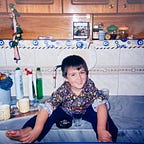Thinking When and Where: The Success Behind Editing
My job as an editor is to gently prod the attention of the audience to look at the various parts of the frame. I do that by manipulating how and where I cut and what succession of images I work with.
-Walter Murch
Quote in the above from one of the most famous film editors and sound designers of history, Walter Murch, explains what is film editing and what is its purpose in a very simple way. Our approach to comprehend the meaning and purpose of sequential images is built upon the form of these frames that can be approached and revealed by semiotics study and the order of these frames. That order reveals one of the most significant aspects of a movie: Its context.
So, what is context, and why it is important? Lev Kuleshov has demonstrated the mental effect that is called as Kuleshov Effect for the first time in his experimental short in 1918. During the short; we see the same man in the exactly same pose towards different objects that are a meal, a dead baby, a woman lying on the sofa and the audience’s interpretation about the man’s situation -his characteristic, his feelings, etc.- is rapidly changing due to the sequential of the images. Therefore, he became the first one who has revealed the significance of sequence and context.
Also, the audience can infer the upcoming situation by relating phenomena to each other and expect the next frame of the sequence. For instance; seeing first a man holding a knife in his hand and then a woman watching TV calmly in a dark atmosphere immediately creates an inference that man holding a knife will kill her in the following minutes. That inference can only be valid with good editing. While telling the editor’s responsibility is so easy, an editor should consider so many things in his mind when creating a scene by cuts and shots.
